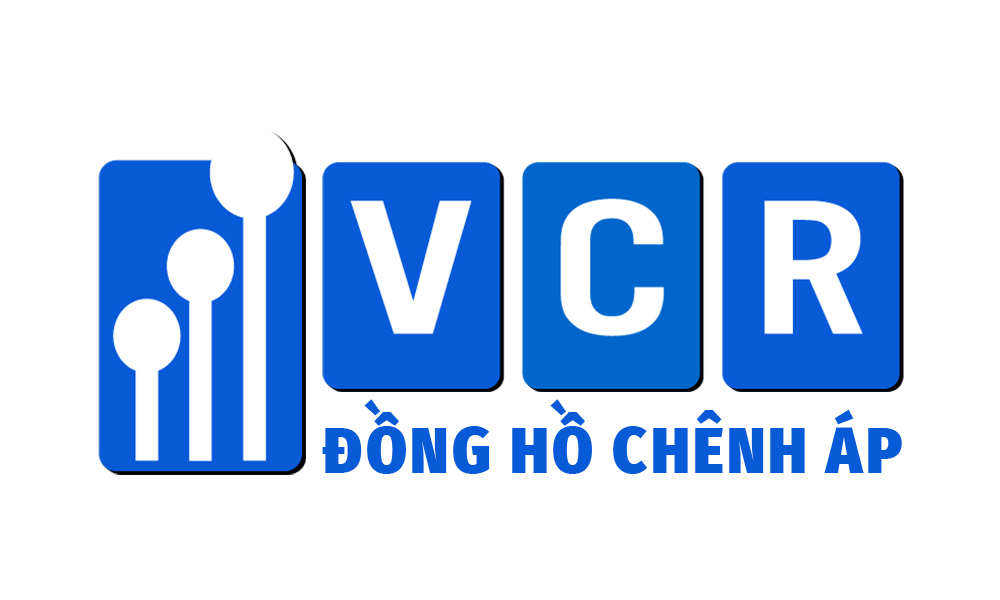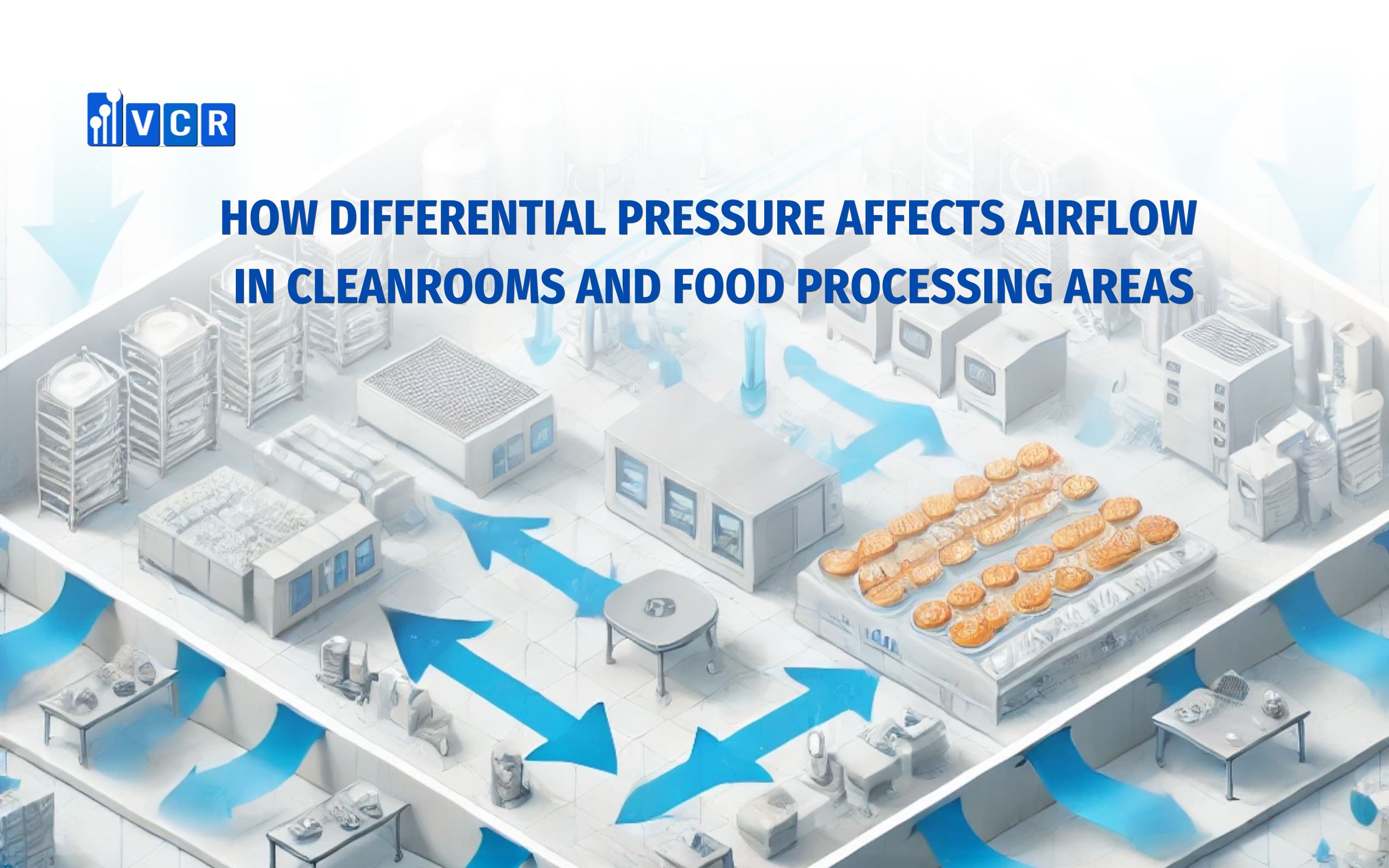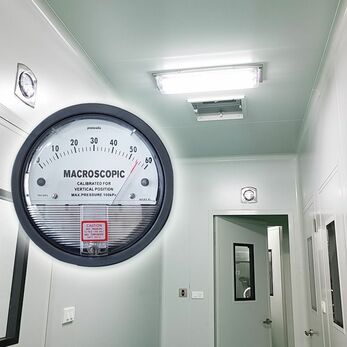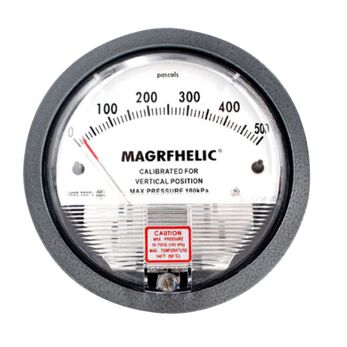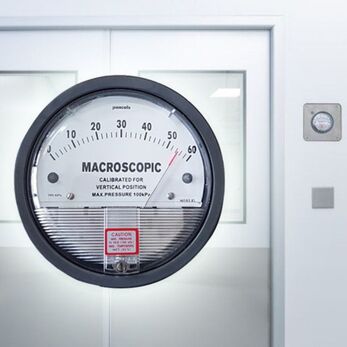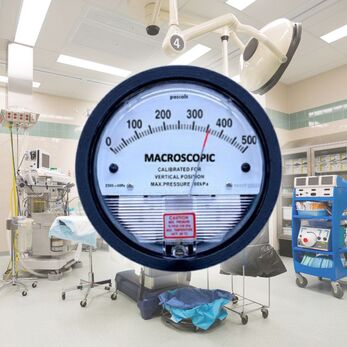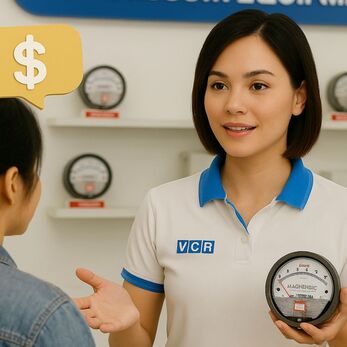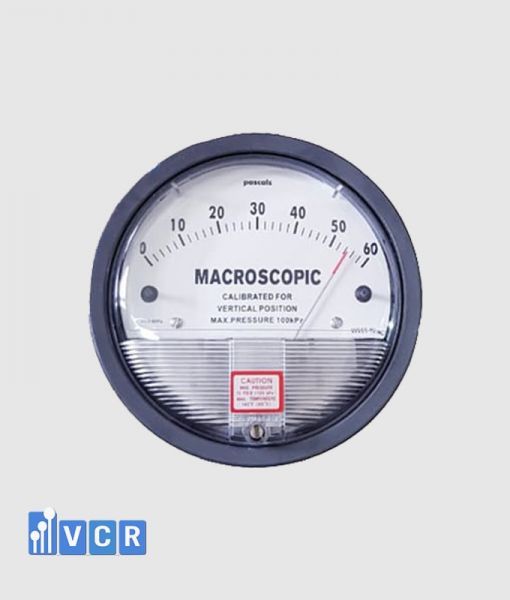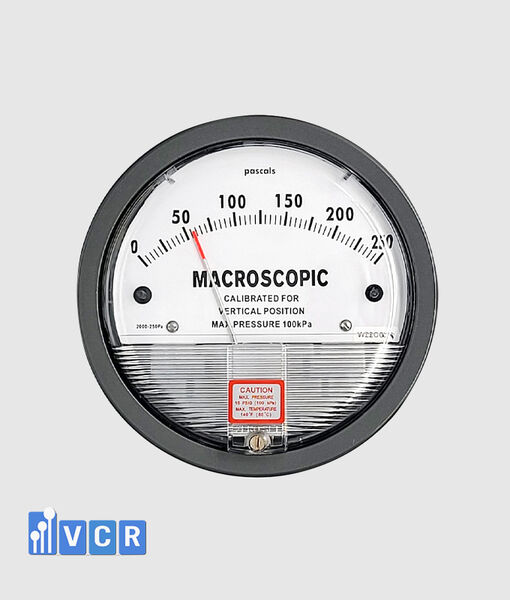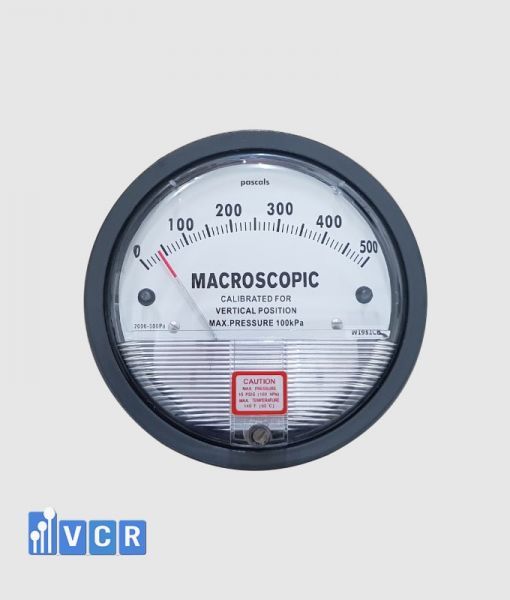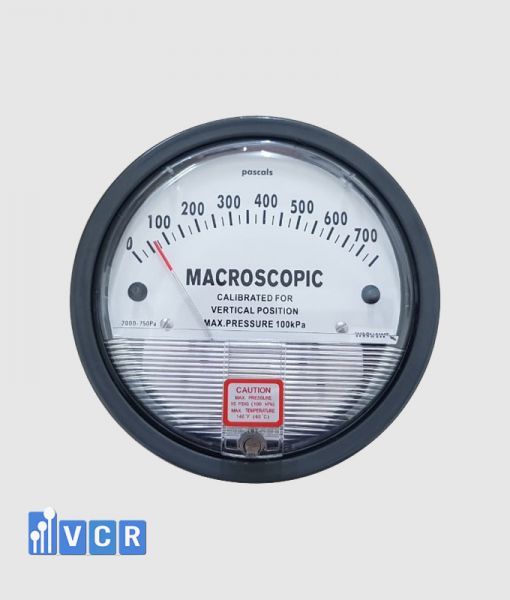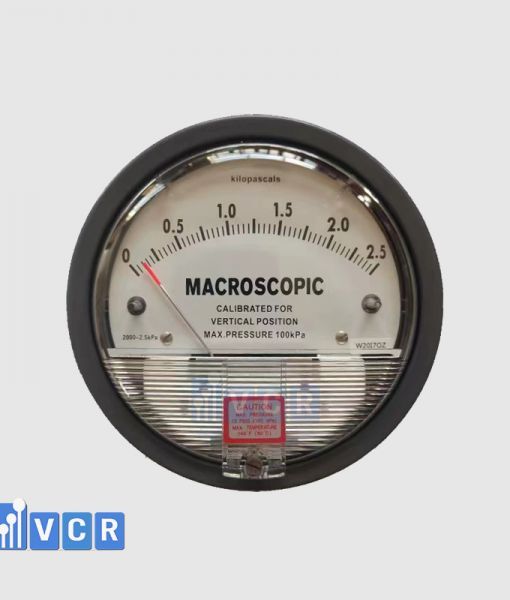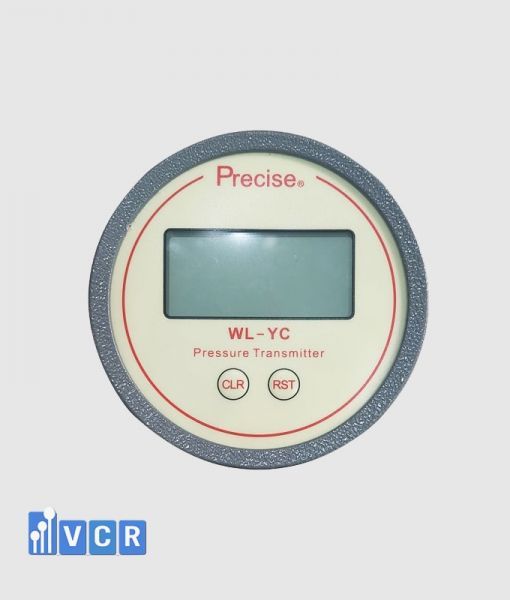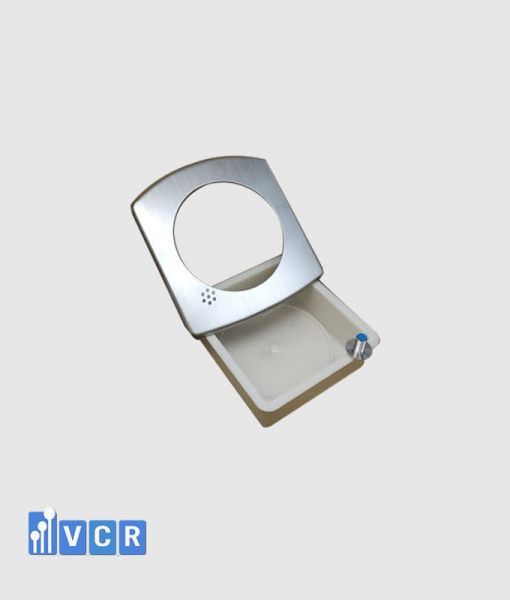Join VCR Cleanroom Equipment to learn How Differential Pressure Affects Airflow in Cleanrooms and Food Processing Areas through the article below.
1. Introduction
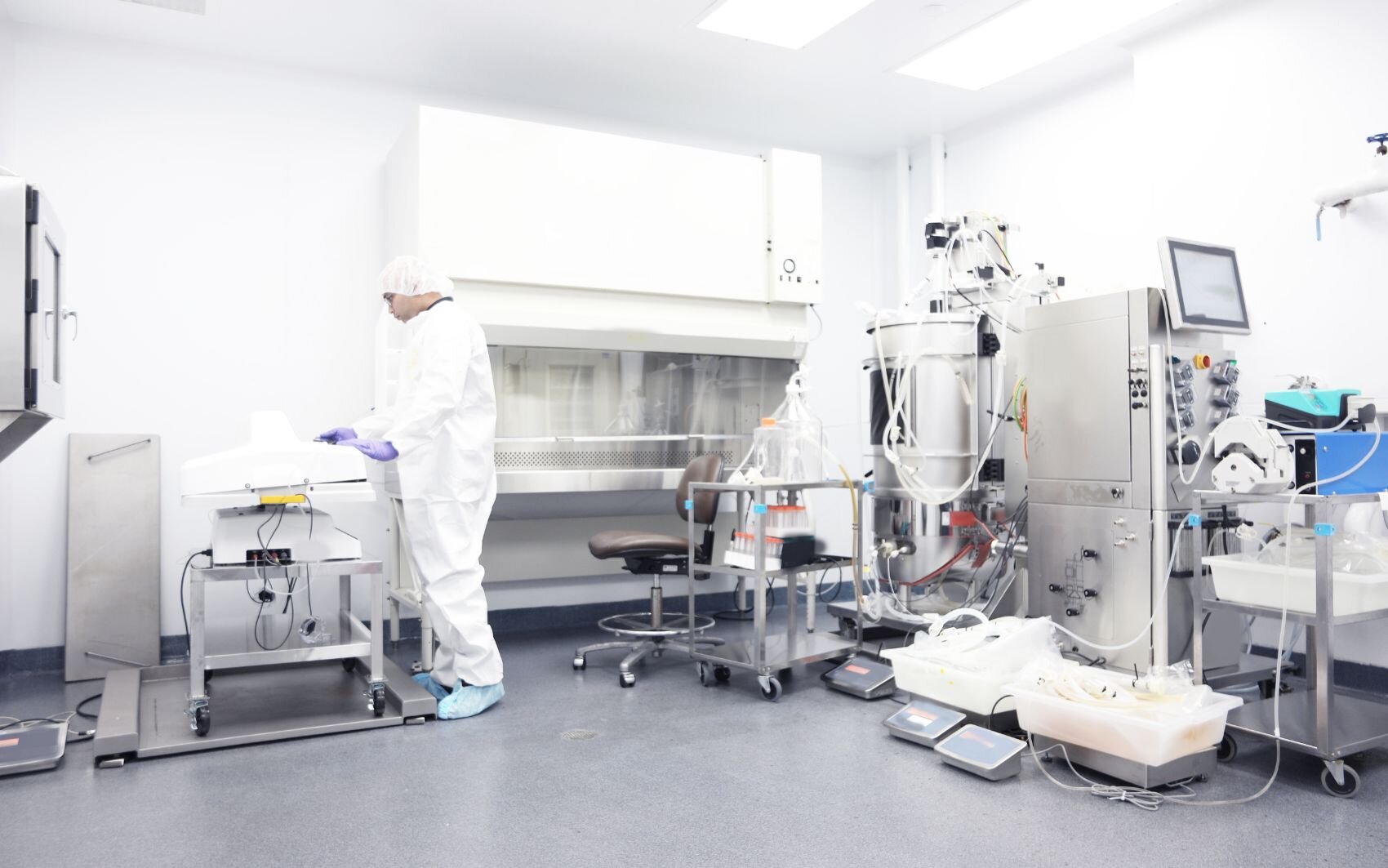
Understanding the Role of Differential Pressure in Controlled Environments
Differential pressure is a critical factor in maintaining cleanroom environments and food processing facilities. It refers to the difference in air pressure between two areas, which helps control air movement and contamination levels. Proper management of differential pressure ensures that air flows in the right direction, either pushing contaminants out of a clean area (positive pressure) or containing hazardous substances within a confined space (negative pressure).
In cleanrooms and food processing areas, differential pressure plays a crucial role in:
- Ensuring controlled airflow, preventing unfiltered air from entering sensitive production areas.
- Reducing airborne contamination, maintaining high hygiene standards.
- Optimizing HVAC system performance, regulating air quality and temperature stability.
Why Differential Pressure is Essential for Cleanrooms and Food Processing
Food factories and cleanrooms must control air movement to prevent contamination from microorganisms, dust, allergens, and chemical residues. Without proper pressure regulation, unfiltered air can bring contaminants into sterile processing zones, compromising product integrity and consumer safety.
Preventing Cross-Contamination Between Different Processing Zones
- Maintaining a positive pressure in cleanrooms ensures that contaminants do not enter critical production areas.
- Negative pressure is used in waste disposal and high-risk contamination zones to contain harmful substances.
Maintaining Compliance with GMP, HACCP, ISO 14644, and FDA Regulations
- Regulatory bodies such as GMP (Good Manufacturing Practices), HACCP (Hazard Analysis and Critical Control Points), ISO 14644 (Cleanroom Standards), and FDA (Food and Drug Administration) mandate strict pressure control to ensure food safety and cleanliness.
- Failure to maintain correct pressure differentials can result in fines, product recalls, and reputational damage.
Enhancing Air Filtration Efficiency and HVAC System Performance
- Differential pressure supports HEPA and ULPA filtration, ensuring that clean air is constantly supplied.
- Helps optimize energy efficiency by reducing air leakage and unnecessary HVAC system strain.
2. Understanding Differential Pressure in Cleanrooms and Food Processing Areas

Maintaining differential pressure is crucial in cleanrooms and food processing facilities to ensure airflow control, contamination prevention, and compliance with hygiene standards. Understanding how pressure differences regulate air movement can help businesses create a safer and more efficient production environment.
2.1. What is Differential Pressure?
Differential pressure refers to the difference in air pressure between two spaces in a controlled environment. It is a fundamental concept in HVAC (Heating, Ventilation, and Air Conditioning) systems and is used to direct airflow in cleanrooms and food production areas.
How Pressure Differentials Direct Airflow to Prevent Contamination
Air naturally moves from high-pressure areas to low-pressure areas. By strategically controlling pressure differences, food factories and cleanrooms can prevent contaminated air from entering critical zones.
This principle ensures that sterile areas receive only clean, filtered air, while areas with potential hazards (such as waste disposal zones) contain contaminants.
Measurement in Pascals (Pa) or Inches of Water Column (in. WC)
Differential pressure is commonly measured in Pascals (Pa) or inches of water column (in. WC).
Standard cleanroom and food production areas typically maintain a pressure differential of 5–50 Pa to ensure proper airflow.
2.2. Positive vs. Negative Pressure in Controlled Environments
Depending on the needs of a facility, differential pressure can be applied in two ways: positive pressure or negative pressure.
Positive Pressure
- Definition: Positive pressure means that the air pressure inside a room is higher than the surrounding areas, ensuring that air flows outward when doors or openings exist.
- Purpose: Prevents contaminants, dust, and unfiltered air from entering critical production spaces.
Common Applications:
- Cleanrooms in food and pharmaceutical production where sterile conditions are required.
- Dairy processing to prevent microbial contamination.
- Beverage bottling and food packaging zones to keep contaminants out.
How It Works:
Air is continuously supplied through HEPA or ULPA filtration systems to maintain clean air flow outward.
The facility uses differential pressure monitoring systems to ensure stable positive pressure levels.
Negative Pressure
- Definition: Negative pressure means that the air pressure inside a room is lower than the surrounding areas, ensuring that air is contained within the space and does not escape into cleaner areas.
- Purpose: Prevents hazardous particles, allergens, and odors from contaminating other sections of the facility.
Common Applications:
- Raw meat processing to prevent bacterial spread.
- Waste handling and disposal zones where contaminants need to be contained.
- Allergen control areas to stop cross-contamination between different food products.
How It Works:
- Air is continuously extracted using exhaust ventilation systems, ensuring that contaminants are pulled away from clean zones.
- Differential pressure sensors and HVAC controls regulate air movement to maintain safe negative pressure levels.
2.3. How Differential Pressure Directly Affects Airflow
Differential pressure plays a direct role in managing air circulation, contamination control, and energy efficiency within cleanrooms and food production areas.
Creates Controlled Air Movement That Minimizes Airborne Contamination
Ensures clean air consistently flows into production zones while preventing outside contaminants from entering.
Helps maintain strict hygiene conditions, particularly in sterile food processing.
Influences HVAC System Efficiency, Ensuring Proper Air Exchange Rates
A well-regulated differential pressure system reduces strain on HVAC systems, leading to lower energy consumption.
Helps maintain stable temperature and humidity levels, improving overall food production conditions.
Prevents Airborne Pollutants from Crossing into Critical Areas
Reduces the risk of bacterial contamination in food processing.
Ensures that allergens or chemical residues do not spread into sensitive production areas.
Proper differential pressure management is essential for achieving compliance with GMP, HACCP, and ISO 14644 regulations, protecting both food safety and production efficiency. The next section will explore how to maintain optimal pressure levels in food factories and cleanrooms for the best performance and regulatory compliance.
3. Importance of Maintaining Proper Differential Pressure
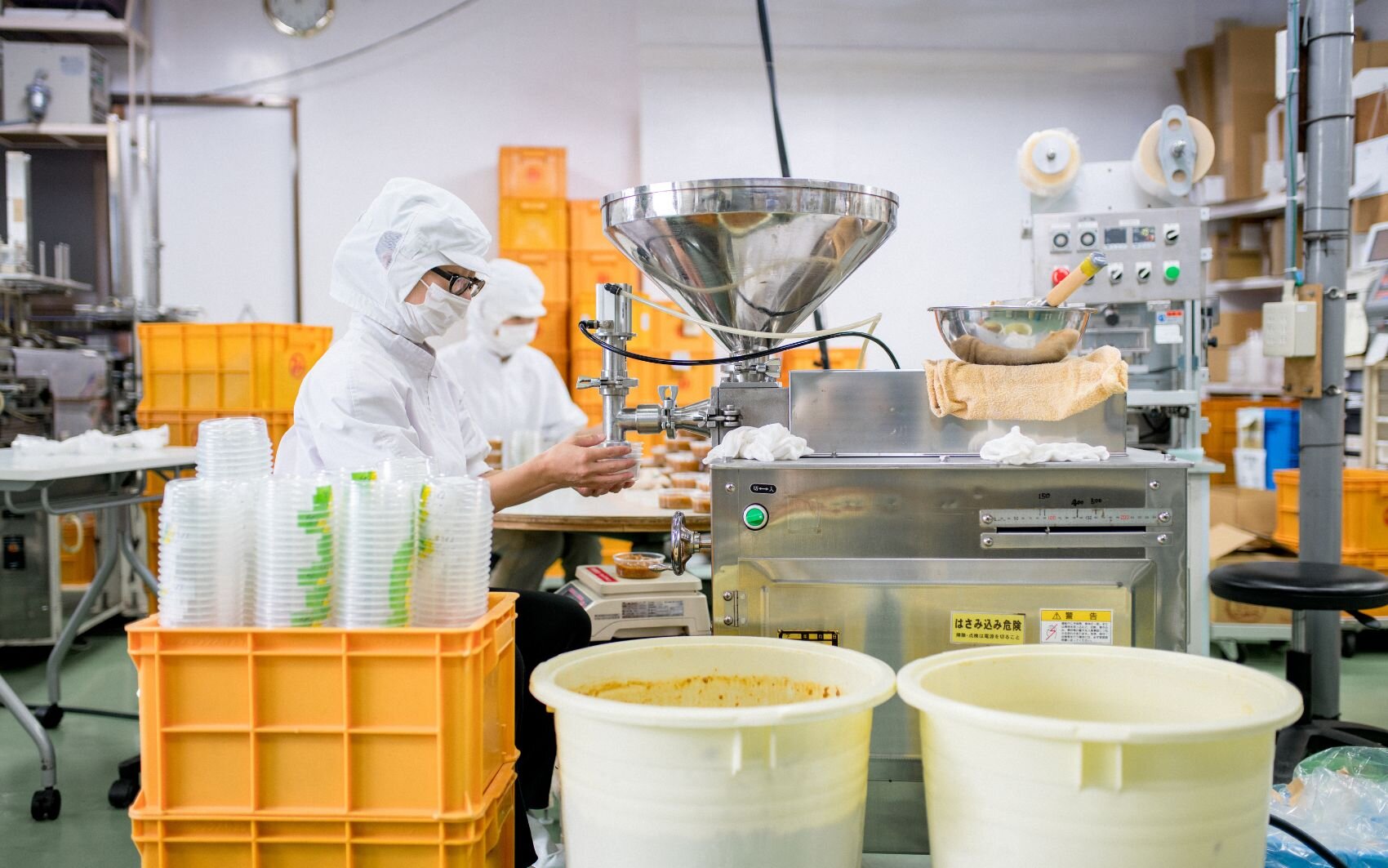
Maintaining proper differential pressure in cleanrooms and food processing areas is essential for contamination control, regulatory compliance, and operational efficiency. A well-regulated pressure system prevents airborne particles, bacteria, allergens, and dust from spreading between different production zones. This section explores the key benefits of maintaining optimal differential pressure and its impact on food safety, HVAC performance, and workplace health.
3.1. Preventing Cross-Contamination and Ensuring Food Safety
Food safety is the top priority in any food processing facility. Improper differential pressure can allow contaminants to move between zones, compromising product integrity and increasing the risk of foodborne illnesses.
Proper Pressure Control Stops Contaminants from Spreading
Positive pressure prevents unfiltered air from entering sterile food processing zones.
Negative pressure ensures that hazardous particles from waste disposal areas do not spread.
Reduces Risk of Microbial Contamination, Dust Ingress, and Allergen Transfer
Microbial contamination: Poor pressure control can lead to the spread of bacteria, mold, and yeast, affecting food quality and safety.
Dust ingress: Unregulated pressure differentials allow dust particles to accumulate on food products and equipment.
Allergen transfer: Facilities processing different food types need proper airflow separation to prevent cross-contamination of allergens.
Example: How Improper Pressure Control in Dairy Processing Leads to Spoilage
Dairy products require strict hygiene control to prevent bacterial contamination.
A pressure imbalance can allow unfiltered air and airborne bacteria to enter processing rooms, accelerating spoilage.
Maintaining positive pressure in pasteurization and packaging areas helps ensure product shelf life and safety.
3.2. Compliance with Industry Standards and Regulations
Food processing and pharmaceutical cleanrooms must adhere to strict regulatory standards that mandate specific pressure control measures. Proper differential pressure management ensures compliance with:
GMP (Good Manufacturing Practices): Requires controlled air environments to prevent contamination.
HACCP (Hazard Analysis and Critical Control Points): Mandates proper air control to minimize food safety risks.
ISO 14644: Defines cleanroom classifications based on differential pressure and air cleanliness levels.
FDA (Food and Drug Administration) Regulations: Requires proper airflow control in food and pharmaceutical manufacturing.
Cleanroom Classifications Depend on Maintaining Specific Pressure Differentials
ISO Class 5 Cleanrooms (Sterile Production): Requires +25 Pa positive pressure to prevent airborne contamination.
ISO Class 7 Cleanrooms (Food Packaging): Maintains +10–15 Pa differential pressure for clean processing.
Waste and Contaminated Zones: Should maintain -10 to -20 Pa negative pressure to contain pollutants.
Failure to Comply Results in Regulatory Fines, Product Recalls, and Safety Violations
Insufficient pressure control can result in safety violations and food contamination incidents.
Regulatory audits require proof of compliance with differential pressure guidelines.
Food recalls, legal penalties, and loss of consumer trust can significantly impact business operations.
3.3. Enhancing HVAC and Air Filtration Performance
A properly maintained differential pressure system improves HVAC efficiency and extends the lifespan of air filtration systems. Maintaining stable pressure levels ensures optimal airflow rates and energy efficiency.
Proper Differential Pressure Improves HVAC Efficiency and Reduces Energy Costs
Balanced pressure levels prevent HVAC systems from overworking, leading to lower energy consumption.
Prevents pressure surges that can damage HVAC components, reducing maintenance costs.
Ensures Consistent Airflow Rates, Preventing Stagnant Air Pockets
A well-regulated airflow system eliminates stagnant air, reducing the risk of mold and bacterial growth.
Proper airflow control enhances temperature and humidity stability, creating ideal conditions for food production.
Helps HEPA/ULPA Filters Function Effectively, Prolonging Their Lifespan
Differential pressure maintains a steady air exchange rate, preventing filters from becoming overloaded.
Reduces clogging and premature replacement costs for HEPA/ULPA filters.
3.4. Impact on Worker Health and Facility Environment
Maintaining differential pressure is not only important for food safety but also plays a key role in protecting workers from airborne hazards and creating a healthy work environment.
Ensures a Safe and Breathable Work Environment
Controlled pressure helps maintain fresh, clean air circulation, improving overall air quality.
Prevents exposure to dust, allergens, and harmful gases in food processing areas.
Controls Humidity Levels, Preventing Mold and Bacterial Growth
Proper airflow reduces excess moisture, minimizing the risk of mold formation in production zones.
Helps maintain consistent humidity levels, ensuring food storage safety.
Reduces Worker Exposure to Airborne Contaminants and Allergens
Negative pressure areas help contain hazardous substances, reducing occupational health risks.
Proper ventilation systems reduce the spread of food allergens, protecting workers and consumers.
Maintaining proper differential pressure is essential for ensuring food safety, compliance, and operational efficiency in cleanrooms and food factories. The next section will explore common challenges faced in maintaining pressure levels and provide practical solutions to optimize airflow control.
4. Common Challenges in Maintaining Differential Pressure and Airflow
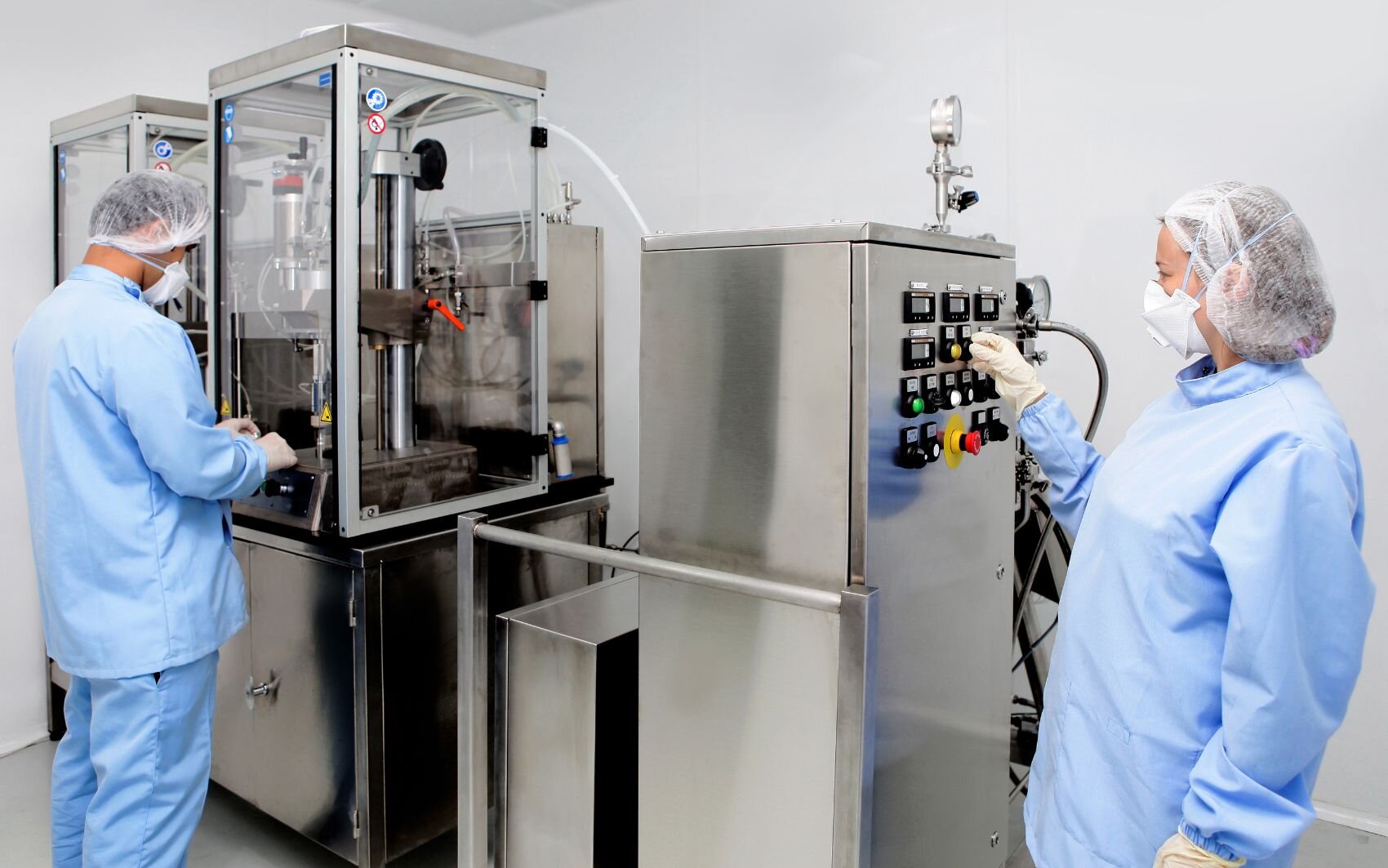
Maintaining consistent differential pressure is essential for controlling airflow, preventing contamination, and ensuring regulatory compliance in cleanrooms and food processing areas. However, several common challenges can lead to pressure imbalances, inefficient air circulation, and safety risks. Addressing these challenges requires proactive maintenance, proper system calibration, and advanced monitoring solutions.
4.1. Fluctuations in Pressure Due to Improper HVAC Calibration
HVAC (Heating, Ventilation, and Air Conditioning) systems are responsible for regulating airflow and maintaining stable pressure differentials. If HVAC settings are not properly calibrated, pressure fluctuations can occur, leading to contamination risks and regulatory non-compliance.
Poorly Maintained HVAC Systems Cause Pressure Imbalances
A malfunctioning HVAC system may supply too much or too little air, disrupting the required pressure differential.
Unbalanced airflow distribution can lead to negative pressure in clean zones, allowing contaminants to enter.
Impact on Airflow Uniformity and Contamination Control
Pressure fluctuations can result in inconsistent airflow, creating areas of stagnant air or turbulence.
Poor airflow regulation can lead to contamination incidents, as unfiltered air moves into sensitive zones.
Solution: Regular Calibration and Airflow Balancing
Perform routine HVAC inspections to ensure air handling units are functioning correctly.
Use airflow sensors and differential pressure gauges to monitor and adjust system settings.
Implement airflow balancing procedures to maintain even pressure distribution across all cleanroom areas.
4.2. Air Leakages from Doors, Windows, and Ductwork
Even a well-calibrated HVAC system can struggle to maintain differential pressure if air leaks exist. Unsealed openings allow uncontrolled airflow, leading to pressure instability and energy inefficiencies.
Unsealed Gaps Allow Uncontrolled Airflow, Affecting Pressure Stability
Gaps in doors, windows, and duct connections allow air to escape, disrupting pressure control.
Unintentional airflow makes it difficult to maintain positive or negative pressure environments.
Leads to Energy Waste and Difficulty Maintaining Cleanroom Classifications
Constant pressure fluctuations force HVAC systems to work harder, increasing energy consumption.
Regulatory audits may flag inconsistent pressure differentials, requiring costly adjustments.
Solution: Implement Airlocks, Sealed Duct Systems, and Automatic Door Closers
Use airlocks to create buffer zones, minimizing pressure disturbances when doors open.
Seal duct systems with high-quality insulation materials to prevent leaks.
Install automatic door closers to ensure doors remain fully sealed when not in use.
4.3. Overloading or Clogging of HEPA/ULPA Filters
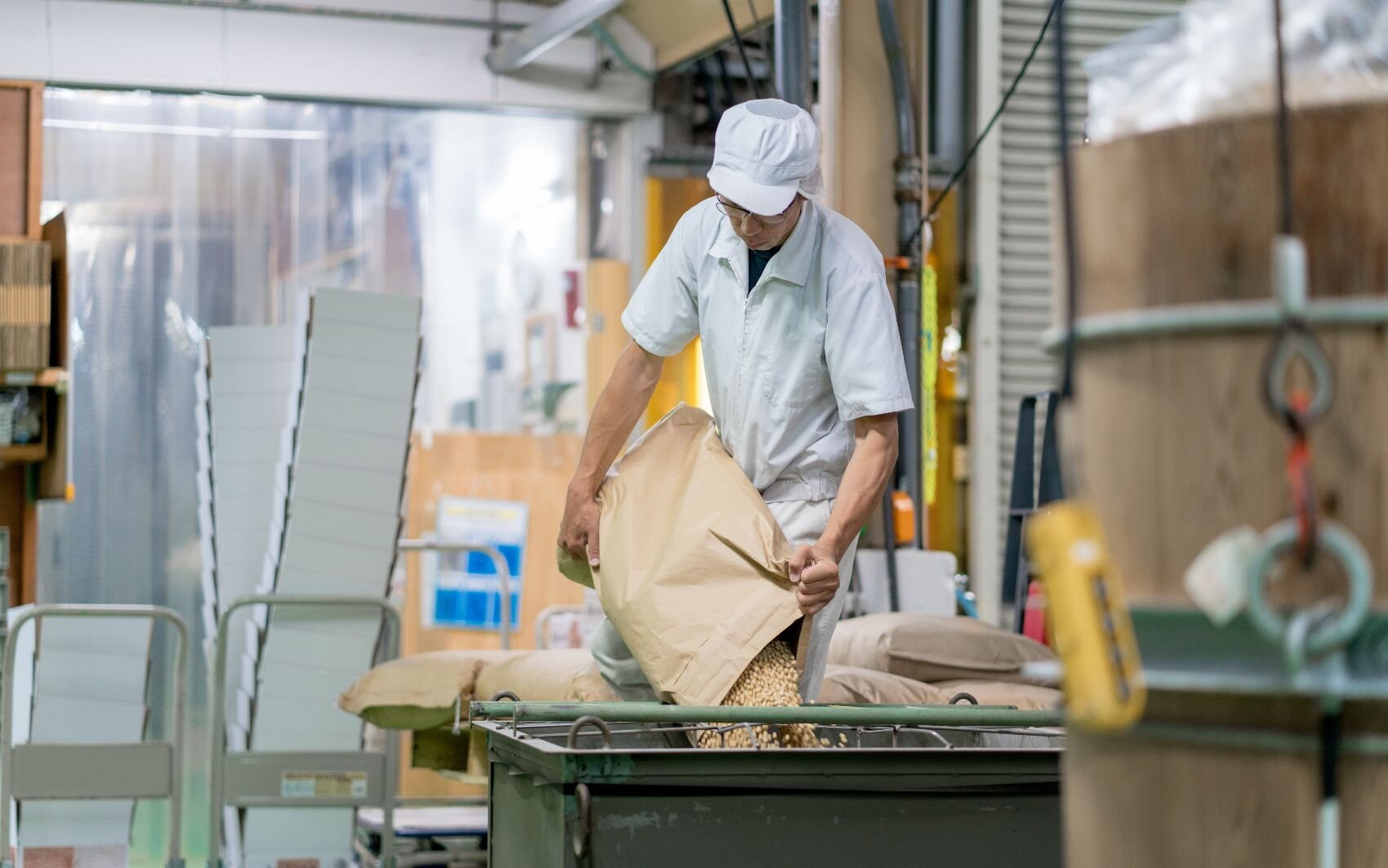
HEPA (High-Efficiency Particulate Air) and ULPA (Ultra-Low Penetration Air) filters are designed to remove airborne contaminants in cleanrooms and food production zones. However, when filters become overloaded or clogged, they can restrict airflow, causing unexpected pressure drops.
Clogged Filters Restrict Airflow, Causing Unexpected Pressure Drops
Accumulated dust and debris reduce the efficiency of HEPA/ULPA filters, limiting air circulation.
This can create negative pressure imbalances, leading to the infiltration of unfiltered air.
Reduces Air Purification Efficiency, Leading to Contamination Risks
A dirty or inefficient filter allows bacteria, mold, and allergens to bypass the filtration system.
Poor air quality can compromise food safety, leading to potential product recalls.
Solution: Regular Filter Replacement and Pressure Monitoring
Establish a preventive maintenance schedule to replace filters at manufacturer-recommended intervals.
Monitor differential pressure across HEPA/ULPA filters to detect clogging early.
Use pressure alarms to alert staff when airflow drops below acceptable levels.
4.4. Inadequate Monitoring and Lack of Pressure Control Systems
Many food processing facilities fail to track differential pressure in real-time, leading to pressure imbalances that go unnoticed. Without proper monitoring, facilities face contamination risks, product spoilage, and regulatory violations.
Without Proper Monitoring, Pressure Imbalances Go Unnoticed
Minor leaks, filter blockages, or HVAC inefficiencies may not be immediately visible but can have long-term consequences.
Untracked pressure fluctuations can result in significant product losses before the issue is identified.
Leads to HVAC Inefficiencies, Contamination Risks, and Compliance Failures
Without real-time pressure monitoring, corrective actions are often delayed, increasing food safety risks.
Failure to maintain regulatory pressure levels can result in fines, warnings, or forced shutdowns.
Solution: Install Differential Pressure Gauges and Sensors for Real-Time Tracking
Use differential pressure gauges to provide constant visibility into pressure levels.
Install digital pressure sensors integrated with the HVAC system and Building Management Systems (BMS).
Set up automated alerts that notify personnel when pressure deviations occur, allowing for immediate corrective actions.
5. How to Optimize Differential Pressure for Better Airflow Control

Optimizing differential pressure is crucial for maintaining air quality, preventing contamination, and ensuring regulatory compliance in cleanrooms and food processing areas. Implementing the right monitoring tools, HVAC systems, and maintenance strategies can help facilities achieve consistent airflow control and improve operational efficiency.
5.1. Installing and Using Differential Pressure Gauges
Differential pressure gauges are essential tools for monitoring real-time pressure variations between different zones in a facility. By measuring and displaying pressure differences, these gauges help operators ensure stable airflow and prevent contamination risks.
Gauges Help Monitor Real-Time Pressure Variations Between Zones
Continuous pressure monitoring allows early detection of pressure imbalances before they lead to major issues.
Helps maintain compliance with GMP, HACCP, and ISO 14644 requirements.
Alerts staff when pressure deviations occur, allowing for immediate corrective actions.
Types of Gauges: Mechanical, Digital, and Automated Pressure Sensors
Mechanical (Analog) Differential Pressure Gauges
Simple, cost-effective, and does not require electricity.
Suitable for low-tech environments such as food storage rooms.
Limited in accuracy and cannot be remotely monitored.
Digital Differential Pressure Gauges
Provides real-time pressure readings with digital displays.
Often features alarms and connectivity options for monitoring.
Ideal for cleanrooms and critical processing areas.
Automated Differential Pressure Sensors
Integrated with HVAC systems and Building Management Systems (BMS).
Offers remote monitoring and automatic adjustments.
Best suited for high-precision food processing facilities.
Proper Placement Near Airlocks, Clean Zones, and HVAC Entry Points
Install gauges at airlocks to monitor pressure shifts when doors open and close.
Place sensors in clean zones to detect pressure drops before contamination occurs.
Position gauges at HVAC entry points to track airflow stability and detect filter blockages.
5.2. Implementing a Smart HVAC and Airflow Control System
A well-optimized HVAC system plays a vital role in maintaining consistent airflow, reducing energy consumption, and ensuring regulatory compliance. Advanced automated control systems help adjust air pressure levels dynamically based on real-time conditions.
Use Automated HVAC Controls to Adjust Air Pressure Dynamically
Traditional HVAC systems maintain fixed airflow rates, which may not adapt to pressure fluctuations.
Smart HVAC systems adjust airflow based on real-time sensor data, ensuring optimal pressure differentials.
Helps reduce overuse of ventilation and minimizes energy costs.
Integrate Building Management Systems (BMS) for Remote Monitoring
BMS integration allows operators to monitor and control air pressure remotely.
Provides real-time alerts if pressure imbalances are detected.
Ensures automated responses to pressure fluctuations, reducing manual interventions.
Benefits: Energy Savings, Consistent Airflow, and Regulatory Compliance
- Energy Efficiency – Optimized airflow management reduces HVAC energy consumption, lowering operational costs.
- Consistent Air Quality – Automated adjustments prevent contamination risks, improving food safety.
- Regulatory Compliance – Ensures facilities meet HACCP, GMP, and ISO 14644 requirements without manual monitor
Proper maintenance and calibration of differential pressure systems are essential to ensuring long-term efficiency and accuracy. Regular upkeep helps prevent equipment failures, optimize airflow, and maintain compliance.
Schedule Regular Inspections of Pressure Systems and Airflow Performance
Conduct monthly or quarterly inspections to identify pressure deviations early.
Verify that differential pressure gauges are functioning correctly.
Ensure that air ducts and HVAC components are clean and free from blockages.
Clean and Replace Filters, Ductwork, and Air Handling Units (AHUs)
Clogged HEPA/ULPA filters can cause unexpected pressure drops.
Regular filter replacements improve airflow efficiency and extend HVAC system lifespan.
Inspect and clean air handling units (AHUs) to prevent contamination buildup.
Train Staff on How to Monitor and Adjust Pressure Levels Properly
Provide training programs on how to interpret gauge readings and detect issues early.
Teach staff how to perform basic troubleshooting and adjust airflow settings when needed.
Ensure operators understand the importance of differential pressure in contamination prevention.
Conclusion
Optimizing differential pressure for better airflow control is key to maintaining a contamination-free environment, improving energy efficiency, and ensuring regulatory compliance. By installing proper monitoring tools, integrating smart HVAC systems, and implementing routine maintenance, food manufacturers and cleanroom operators can ensure stable airflow conditions for safe and efficient production.
The next section will summarize the key takeaways and final recommendations for maintaining differential pressure in cleanrooms and food processing facilities.
Maintaining optimal differential pressure is a fundamental requirement for cleanrooms and food processing facilities. Proper pressure control ensures contamination prevention, compliance with industry regulations, and operational efficiency. Without effective airflow management, food manufacturers risk cross-contamination, product recalls, and regulatory violations. Implementing pressure monitoring systems, automated HVAC solutions, and regular maintenance helps maintain a stable production environment, improves air quality, and enhances worker safety.
Summary of Key Takeaways
Differential pressure plays a vital role in maintaining cleanroom and food processing air quality.
Proper pressure differentials direct airflow in a controlled manner, ensuring that clean areas remain uncontaminated.
Positive pressure prevents unfiltered air from entering sterile zones, while negative pressure contains harmful particles in high-risk areas.
Proper airflow control prevents contamination, protects workers, and ensures product quality.
Airborne contaminants such as bacteria, dust, and allergens are major risks in food processing facilities.
Well-regulated airflow prevents cross-contamination, maintaining high hygiene standards.
Ensuring optimal pressure levels contributes to a safer working environment, reducing the risk of respiratory issues caused by airborne contaminants.
Monitoring and maintaining optimal pressure levels is crucial for compliance and efficiency.
Industry standards such as GMP, HACCP, ISO 14644, and FDA mandate strict differential pressure management.
HVAC inefficiencies, unsealed airlocks, and clogged HEPA/ULPA filters can lead to pressure imbalances, affecting production efficiency.
Using real-time monitoring systems and scheduled maintenance helps detect and address issues before they escalate.
Final Recommendations
To ensure long-term success and compliance, food manufacturers should adopt a proactive approach to differential pressure management. The following steps will help facilities maintain optimal airflow conditions and improve overall operational efficiency.
Regular Pressure Monitoring Using Differential Pressure Gauges and Sensors
Installing mechanical, digital, or automated pressure sensors ensures constant tracking of pressure fluctuations.
Placing gauges at key points, such as airlocks, clean zones, and HVAC entry points, helps maintain consistent airflow control.
Implementing automated alert systems can prevent pressure deviations from escalating into critical issues.
Investing in a Smart HVAC System for Better Pressure Control and Automation
Smart HVAC controls dynamically adjust airflow, maintaining stable differential pressure across various production zones.
Integrating Building Management Systems (BMS) allows remote monitoring, improving overall air circulation and temperature control.
Energy-efficient HVAC solutions help reduce operational costs while ensuring optimal pressure conditions.
Implementing Strict Maintenance and Calibration Routines to Prevent Airflow Disruptions
Routine inspections and calibration of HVAC components prevent sudden pressure imbalances.
Regular filter replacements and duct cleanings improve air circulation and extend the lifespan of HEPA/ULPA filters.
Staff training programs should be conducted to ensure personnel understand how to monitor and adjust pressure settings effectively.
Final Thoughts
Investing in proper differential pressure management is not just about meeting regulatory requirements—it is about protecting food integrity, ensuring worker safety, and optimizing operational efficiency. By implementing smart monitoring systems, automated HVAC solutions, and a proactive maintenance strategy, manufacturers can create a contamination-free environment, reduce production risks, and enhance product quality.
By following these best practices, food processing facilities can ensure long-term success, regulatory compliance, and a safer, more efficient working environment.
Hieu VCR








